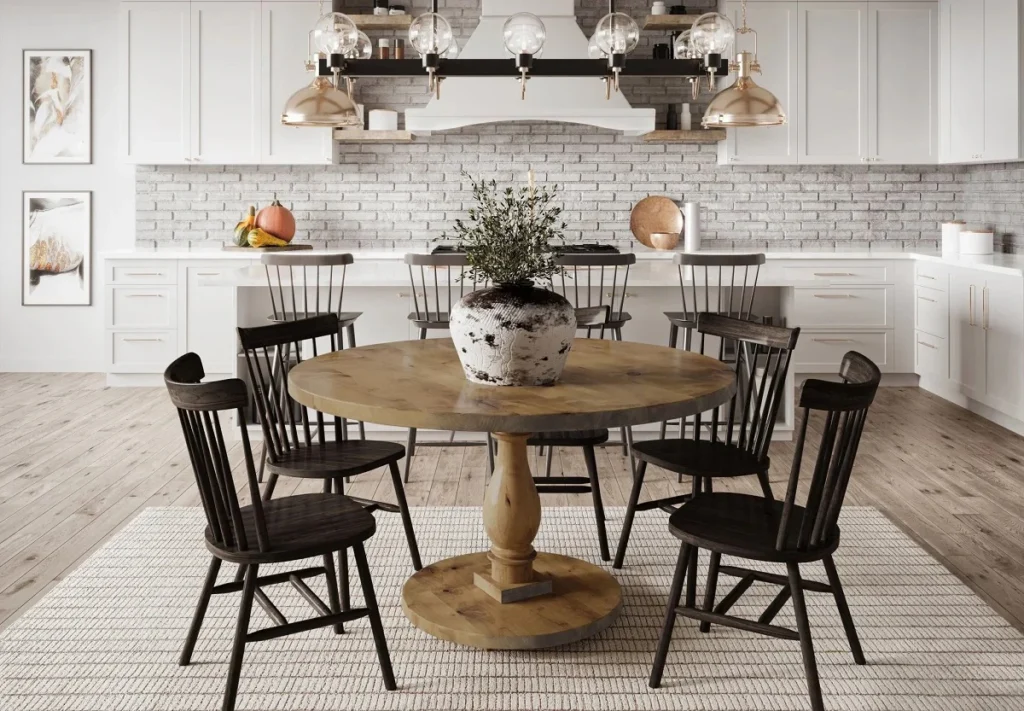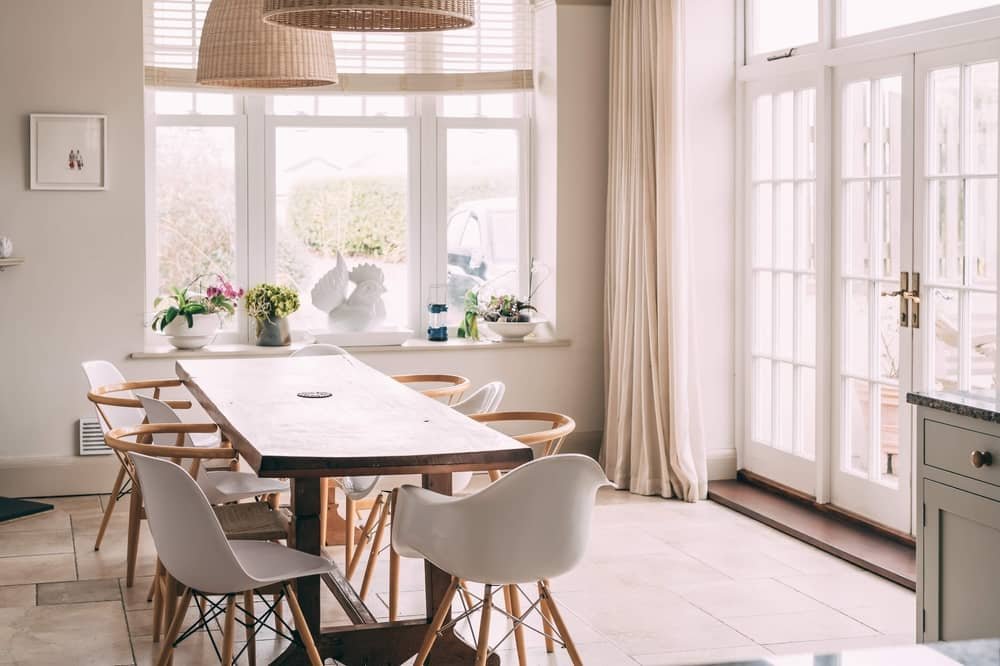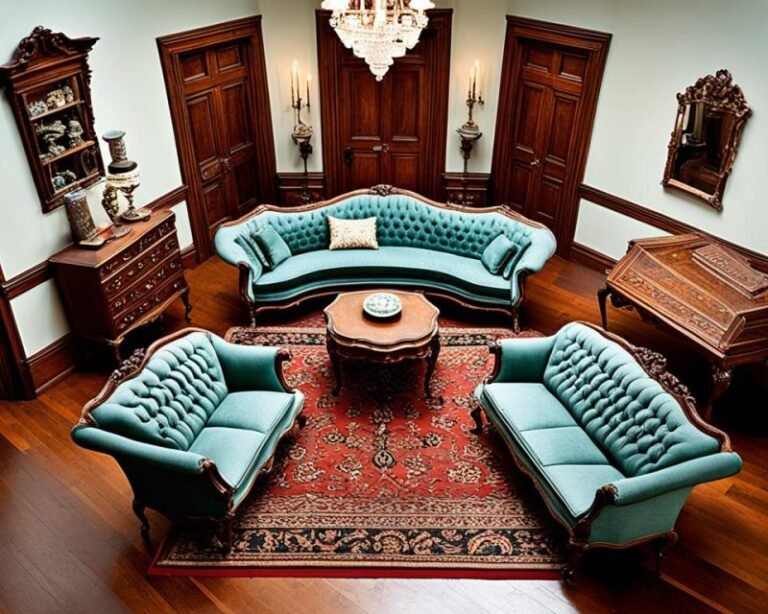
Choosing the right dining table is more than a design decision—it affects how you use your space, entertain guests, and enjoy daily meals. With so many shapes available, round and rectangular tables remain the most popular. But which one suits your space, lifestyle, and aesthetic best?
In this article, we compare round vs. rectangular dining tables in terms of function, room fit, seating capacity, and design style, helping you make the right choice for your home.

Round Dining Tables: Cozy and Conversational
Great for Small or Square Rooms
Round dining tables are a smart choice for compact or square-shaped rooms, where a rectangular table might feel too large or bulky. With no corners to navigate, round tables encourage better traffic flow and allow people to move freely around the room.
Encourages Interaction
A key advantage of round tables is how they encourage conversation. Since everyone faces the center, there’s no “head of the table,” making them ideal for informal family meals or dinner parties where social interaction is key.
Safer for Families
If you have children or a tight space, round tables are often safer because they lack sharp corners, reducing the risk of bumps or injuries.
Limitations to Consider
While round tables are great for small gatherings, they can become impractical for larger groups. Bigger round tables may make it harder for guests to reach food in the center, and seating capacity is generally lower compared to a rectangular table of the same size.
Rectangular Dining Tables: Classic and Functional
Ideal for Larger Spaces
Rectangular tables work best in long, narrow, or open-plan rooms, where their shape complements the layout and fills the space proportionally.
Seats More People Efficiently
Rectangular tables typically seat more people than round tables and are ideal for large families or those who frequently host gatherings. With the ability to add chairs at both ends, it’s easier to scale up when needed.
Expandable Options Available
Many rectangular tables come with extendable leaves, offering flexibility for both everyday use and larger events. This makes them a versatile option for homes that require both functionality and flexibility.
Formality and Structure
The structured look of a rectangular dining table lends itself well to more formal settings. It clearly defines seating positions, making it ideal for dinner parties or occasions where order and presentation matter.
Style and Aesthetic Considerations
-
Round tables tend to give off a casual, cozy, and intimate feel, often fitting rustic, boho, or minimalist interiors.
-
Rectangular tables offer a more formal, grand, and traditional appearance, perfect for contemporary or classic spaces.
Your choice may also depend on other furniture and décor. Round tables soften angular rooms, while rectangular tables echo the lines of walls, windows, and other rectangular elements.
Choosing Based on Your Lifestyle
Ask yourself the following questions to make your decision easier:
- How many people do you need to seat regularly?
Round tables are ideal for 2–6 people. For more, rectangular may be better. - How big is your dining space?
Smaller, square rooms benefit from a round table. Larger, open rooms suit rectangular shapes. - What is your entertaining style?
If you host formal dinners, rectangular tables offer a structured seating arrangement. For casual get-togethers, round tables encourage flow and openness. - Do you have children or mobility concerns?
Round tables are safer in tight quarters and for families with young kids.
Final Verdict: Which Is Best?
There’s no one-size-fits-all answer—both round and rectangular dining tables have their strengths.
-
Choose a round table if you value intimacy, have limited space, or prefer a softer, informal setting.
-
Opt for a rectangular table if you need to seat more people, have a larger room, or enjoy hosting formal gatherings.
Ultimately, the best table for your space depends on your room layout, daily habits, family size, and design preferences.







